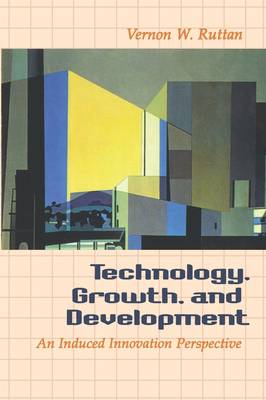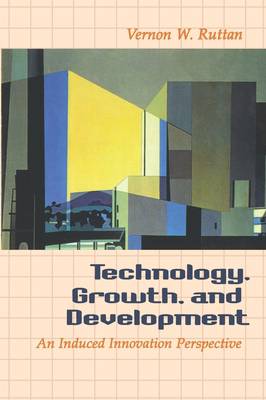
- Retrait gratuit dans votre magasin Club
- 7.000.000 titres dans notre catalogue
- Payer en toute sécurité
- Toujours un magasin près de chez vous
- Retrait gratuit dans votre magasin Club
- 7.000.0000 titres dans notre catalogue
- Payer en toute sécurité
- Toujours un magasin près de chez vous
Technology, Growth, and Development
An Induced Innovation Perspective
Vernon W Ruttan
Livre relié | Anglais
456,45 €
+ 912 points
Description
Technology, Growth, and Development uniquely presents the complexities of technical and institutional change on the foundation of modern growth theory. The author shows how the rates and directions of technical change are induced by changes in competitive funding and institutional innovations in the modern research university and industrial laboratory. In turn, technical change itself becomes a powerful source of institutional change. Organized by the author in four parts, the first-Productivity and Economic Growth-gives specific reasons for the slowing of productivity growth in the United States and other leading industrial countries during the last quarter of the twentieth century. In Part II-Sources of Technical Change-the author examines a host of economic factors that influence invention and innovation; the rate and direction of institutional change; and the adoption, diffusion, and transfer of technology. In Part III-Technical Innovation and Industrial Change-he traces the sources and impact of technical change in five strategically important industries: agriculture, electric power, chemical, computer, and biotechnology. The final section, Part IV-Technology Policy-evaluates the role of technical change in international competition, the role of science and technology in environmental policy, and the evolution of U.S. science and technology policy. Technology, Growth, and Development makes few mathematical demands on students, and will be used in courses within economics departments as well as management and public affairs. In addition, it will be required reading for professional economists, managers, and policy analysts at all levels.
Spécifications
Parties prenantes
- Auteur(s) :
- Editeur:
Contenu
- Nombre de pages :
- 672
- Langue:
- Anglais
Caractéristiques
- EAN:
- 9780195118711
- Date de parution :
- 14-09-00
- Format:
- Livre relié
- Format numérique:
- Genaaid
- Dimensions :
- 164 mm x 242 mm
- Poids :
- 1170 g

Les avis
Nous publions uniquement les avis qui respectent les conditions requises. Consultez nos conditions pour les avis.






